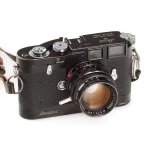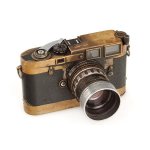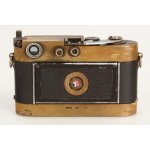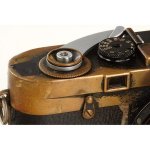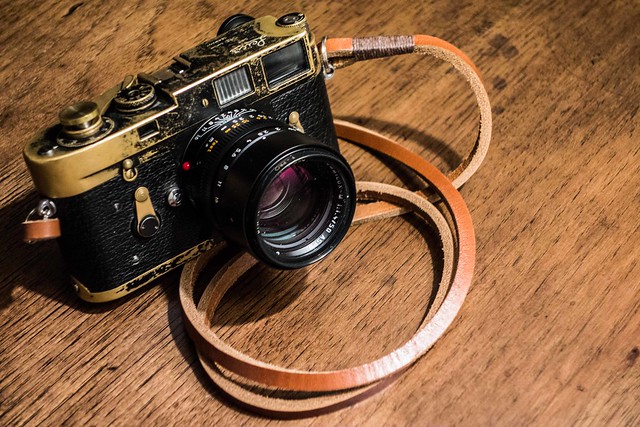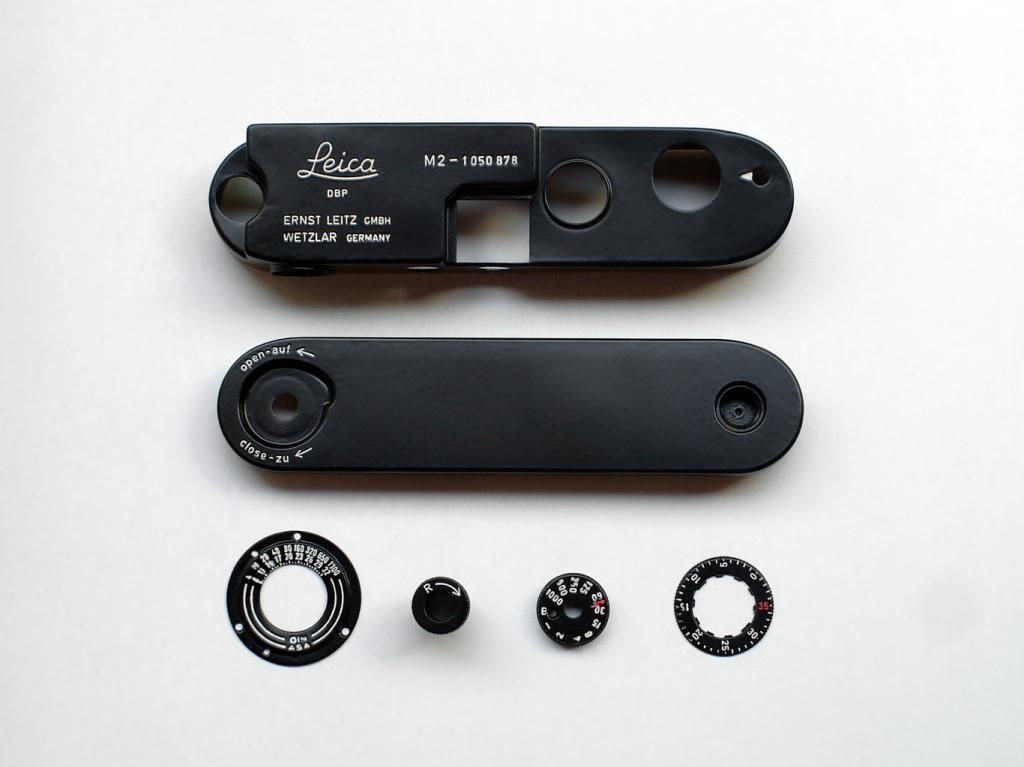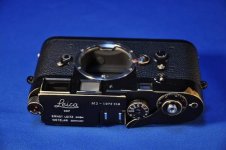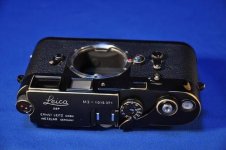In the US
www.acmeplating.com will strip the chrome and nickel for a reasonable price. They did a nice job with my M4.
What are you painters using as a primer on the exposed brass?
1) Diluted acid
2) White vinegar
3) Etching primer (black)
Looking at genuine black paint bodies it's difficult to exactly nail down what they did.
Some appear to have an undercoat of black etching primer. In this case you get black on black wear, before it reaches the brass. The black enamel will wear off faster than the black primer. It looks a little like the layers on a piece of slate.
Some have a semi transparent primer with a greenish tint under the black enamel.
The modern BP MP and custom jobs supposedly use an automotive paint. It may be self etching.
Others appear to have no primer at all under the enamel. I've heard from several sources that some of the paint jobs that Leica did on these cameras are pretty horrendous and wore off very quickly. But then again BP cameras were mostly purchased by professionals who didn't mind the wear.
The earliest ones may use black shellack? I think pre-war LTM bodies are shellack, but I could be wrong.



